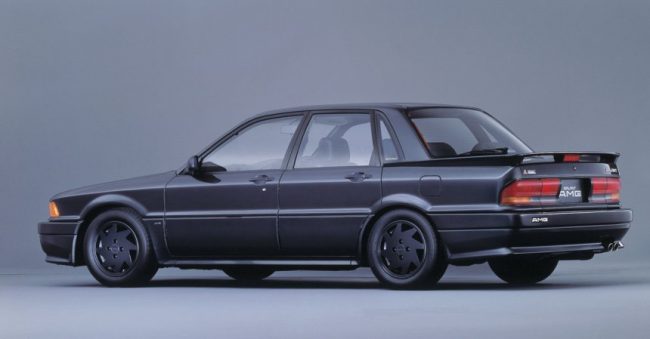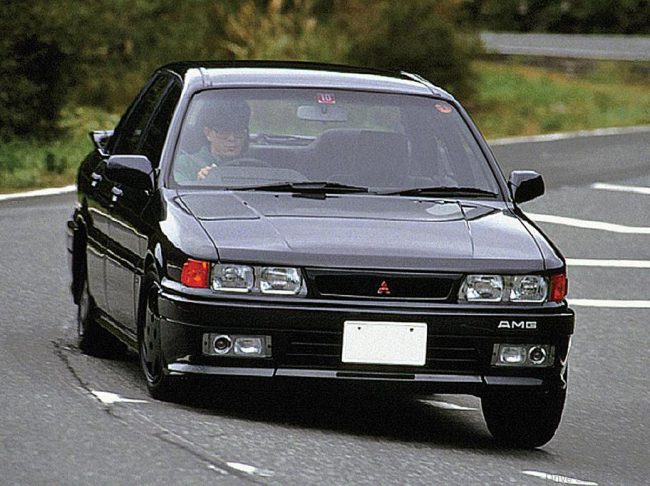
The Legendary Mitsubishi Galant AMG
How many remembers the This is the first ever Japanese engine tuned by the European Company, AMG. It was used in the 91 and 92 Mitsubishi Galant. It is still a very sought after collectible in Japan.
In the 90s, the three words – AMG is immediately turns to the Mercedes Benz with a mighty V8s and high horsepower. However, that’s not the case for Japanese as the three words could be found on the boot lid of a car with three diamond emblem instead.
That’s right, the German tuning house and the Japanese auto manufacturer has led to the developement of not one, but two AMG-tuned Mitsubishis. The first of the two Mitsubishis have AMG tacked to its name was the Mitsubishi Debonair V 3000 DOHC Royal AMG. Ludicrously long name aside, as far as history is concerned, this Mitsubishi-AMG is not considered to be a true AMG, as the AMG badge on the Debonair was about the extent of the input of the German tuners.

The anaemic 148 hp front wheel drive 3.0 litre V6 was all Mitsubishi, and so was the super-soft suspension setup. AMG was apparently only responsible for the square-look body kit, alloy wheels, the steering wheel and the all-important AMG badges.

AMG’s second collaboration with Mitsubishi though yielded far better results, and those results came in the form of the Mitsubishi Galant AMG. The Galant AMG was much more than an appearance package like what was offered on the Debonair. Under the hood of this AMG-fied mid-sized Japanese saloon was a tuned 4G63 engine with new pistons, more aggressive camshafts, a high flow exhaust system and a host of other performance tweaks done at the hands of the German tuners. Resulting in a naturally aspirated 2.0 litre inline four that is capable of revving to 8,000 rpm and producing an impressive-for-the-time 168 hp.

Mated to a five-speed manual and driving solely the front wheels, the Galant AMG was not far off in terms of power compared to 195 hp found in Mitsubishi’s own souped-up attempt at the Galant, the Mitsubishi Galant VR-4. The turbocharged four-wheel drive predecessor to the rally legend of the Lancer Evolution name.
These days, only a few enthusiasts and die-hard Mitsubishi-philes know about this car. So why isn’t it massively popular. It’s probably because it was only sold in Japan and was a limited-run model. The exact production figures are unknown but it is said that only 500 units were built in total. So if you see one on the road, take a picture of it quickly. You just saw some of the few survivors left in the world.







